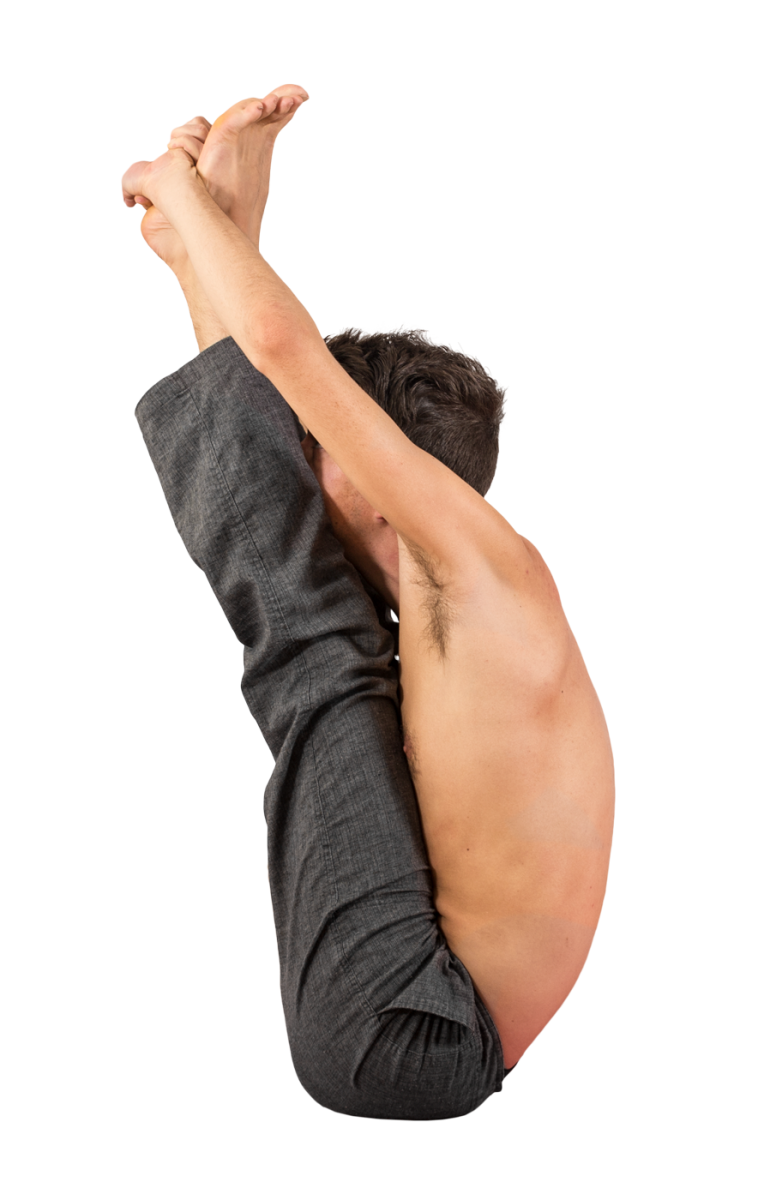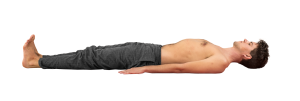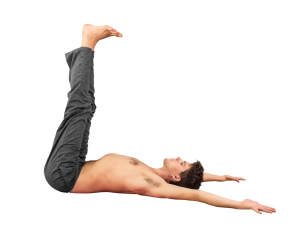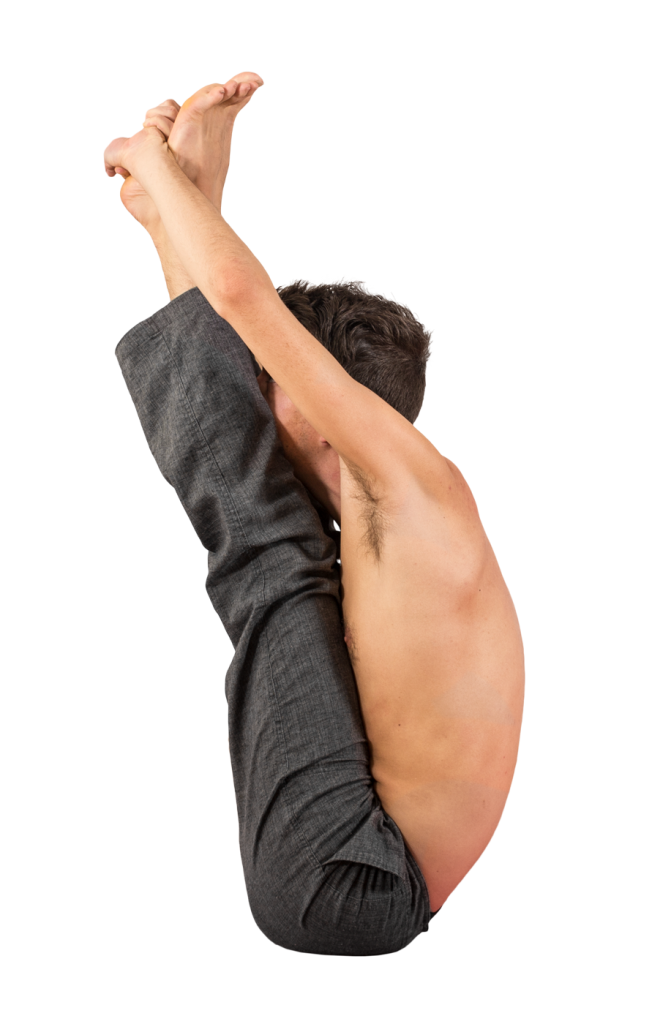Urdhva Mukha Paschimottanasana
- Urdhva: Upward
- Mukha: Facing / Looking
- Paschim: West / Behind (Referring to the dorsal or back surface of the body)
- Uttana: Stretched
- Asana: Pose
Urdhva Mukha Paschimottanasana is the twenty-ninth pose of the primary series, and the twenty-fifth seated pose. It prepares the practitioner for Sarvangasana-family poses and helps to build strength and finesse in the musculature of the low belly.
FOCUS ON…
This asana is very similar to Supta Konasana and Ubhaya Padangusthasana.
Study both of its predecessors closely and develop competence before introducing this movement. All the same actions apply. This asana is the most challenging of the three by far.
Once balanced in the state of the asana, the position of the body is an uprooted version of Paschimottanasana. Fold in closely, but keep the gaze upwards. Don’t try to balance delicately; use the strength of the limbs to find and hold the position.
Vinyasa of the Pose
The vinyasa count is the same as Ubhaya Padangusthasana.
The breath is a major ally here. It is important to use the breath and the bandha, and even to exaggerate them. Shyness with the breath makes this vinyasa more challenging than necessary.
From Sat, jump through and land in Dandasana.
Exhaling, keep the hands pressing into the floor by your hips and lay down slowly.
Inhale, reach the arms up overhead.
As the next exhalation leaves the body, lift straight legs off the ground, lift the hips, and place the feet in the hands smoothly.
Inhale, straighten the spine.
Exhale strongly, curl in, and rock forward to balance. Inhale as you find your balance point. Gaze upwards.
Exhale, fold the torso to the legs as in Paschimottanasana. Five breaths here; this is the state of the asana.
Exhale, keep the legs where they are but place the hands on the floor beside the hips. Lift up; take vinyasa.
COMMON MISTAKES
Do not be satisfied with bending the knees or releasing the grip on the toes to rock up. If compromised in that way, the asana becomes largely worthless.
If you’re unable to follow the vinyasa and are tempted to roll into and out of the posture with momentum, place this asana aside for the moment and study previous asana in the primary series more.





